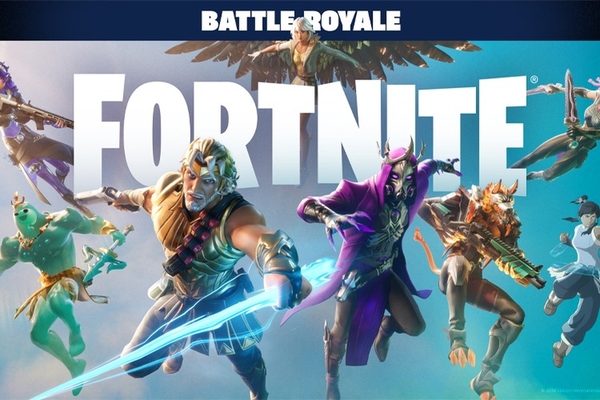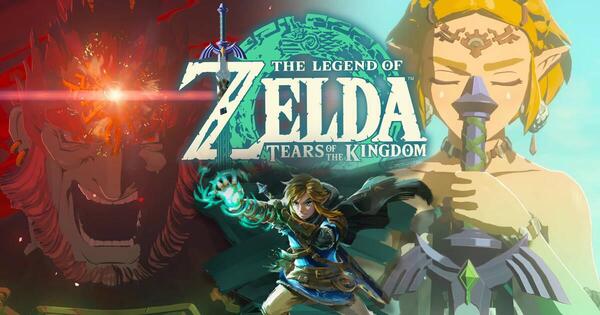
Introduction
Fortnite, a game that began as a simple battle royale, has grown into a cultural phenomenon, drawing in millions of players worldwide. At its core, Fortnite is a free-to-play game, but its economic backbone is built on microtransactions. These microtransactions, mainly driven by cosmetic items like skins, emotes, and battle passes, are not just about generating revenue; they are intricately linked to player engagement, retention, and overall game experience. This article delves deeply into the economic ecosystem of Fortnite, focusing on microtransactions, how they influence player behavior, and the potential ethical concerns surrounding this model.
The Genesis of Microtransactions in Fortnite
Fortnite’s transition from a niche game to a global powerhouse was marked by the introduction of microtransactions. Initially, Epic Games launched Fortnite as a paid early access title with a PvE (Player vs. Environment) mode called “Save the World.” However, it wasn’t until the release of the free-to-play Battle Royale mode in September 2017 that the game skyrocketed in popularity. This mode, which pits 100 players against each other on a shrinking map, quickly became a cultural sensation.

The free-to-play model was a strategic decision, allowing Epic Games to attract a massive player base. However, to sustain the game’s development and servers, monetization was necessary. Thus, microtransactions were introduced, allowing players to purchase V-Bucks, the in-game currency, which could be used to buy cosmetic items. These items do not affect gameplay but have become a core part of the Fortnite experience, influencing player identity and social interaction within the game.
The Battle Pass: A Masterclass in Player Retention
The introduction of the Battle Pass system revolutionized how microtransactions work in Fortnite. For a fixed price, players can purchase a Battle Pass, which offers a series of rewards that can be unlocked by completing challenges and earning experience points (XP) throughout a season. The Battle Pass provides both a revenue stream for Epic Games and a tool for player retention.
Each season typically lasts around 10 weeks, and the Battle Pass is designed to keep players engaged throughout that period. The more time a player invests in the game, the more rewards they can unlock. This system taps into the psychology of completionism, where players feel compelled to complete the Battle Pass to obtain all the exclusive rewards. Moreover, the sense of urgency created by the limited-time nature of each season encourages players to log in regularly.
The Role of FOMO in the Battle Pass System
FOMO, or the Fear of Missing Out, is a significant psychological driver in the success of the Battle Pass. By offering exclusive rewards that are only available during a specific season, Fortnite creates a sense of scarcity. Players are motivated to purchase and complete the Battle Pass because they fear missing out on these items forever. This strategy not only drives initial sales of the Battle Pass but also keeps players engaged throughout the season.
Daily and Weekly Challenges: A Retention Strategy
To further enhance engagement, Fortnite introduces daily and weekly challenges that are tied to the Battle Pass. These challenges incentivize players to log in frequently and spend more time in the game to complete them. The challenges range from simple tasks to more complex objectives that require strategic gameplay, encouraging players to explore different aspects of the game.
The Ethics of Microtransactions: Is Fortnite Exploiting Its Players?
While microtransactions have proven to be a successful business model for Fortnite, they have also sparked significant controversy. Critics argue that Fortnite’s monetization strategy, particularly its use of the Battle Pass and other cosmetic items, can be exploitative, especially towards younger players. The game’s target audience includes a large number of children and teenagers, who may not fully understand the implications of spending money on virtual items.
One of the primary concerns is the use of psychological tactics to encourage spending. The FOMO associated with limited-time items, the gamification of the Battle Pass, and the social pressure to own certain skins or emotes can lead to impulsive spending. Some players may feel compelled to spend money to fit in with their peers or to avoid feeling left out, even if they cannot afford it.
Loot Boxes and Gambling Allegations
Although Fortnite does not directly use loot boxes, a controversial monetization tactic in which players purchase a randomized item, it still faces criticism for similar practices. The randomness associated with obtaining certain items through special events or promotional offers can create a gambling-like experience, especially for younger players. This has led to debates about whether Fortnite’s microtransactions should be more tightly regulated to protect vulnerable players.
Parental Controls and Epic Games’ Response
In response to these concerns, Epic Games has implemented various parental control features, allowing parents to set spending limits or disable in-game purchases entirely. However, the effectiveness of these measures is still up for debate, as the game’s design inherently encourages spending. The balance between monetization and ethical responsibility remains a contentious issue within the gaming industry.
The Social Currency of Skins and Emotes

In Fortnite, cosmetic items like skins and emotes have become a form of social currency. Players often use these items to express their individuality, showcase their achievements, or simply fit in with the latest trends. This social aspect of cosmetic items adds another layer to the game’s microtransaction system, as players are motivated to purchase these items not just for themselves but also to gain social approval from their peers.
The introduction of crossover skins, featuring characters from popular franchises like Marvel, Star Wars, and DC Comics, has only amplified this trend. These skins are often released as part of limited-time events, further driving the sense of FOMO and encouraging players to spend money to obtain them.
The Impact on Player Identity and Community Dynamics
Skins and emotes have become a way for players to craft their in-game identity. This has led to the formation of subcultures within the Fortnite community, where certain skins or emotes are associated with specific player types or social groups. For instance, players who use rare or exclusive skins may be viewed as more skilled or experienced, while those who use more common skins might be seen as beginners.
The Influence of Streamers and Content Creators
Streamers and content creators play a significant role in shaping the popularity of certain skins and emotes. When a well-known streamer uses a particular skin, it often becomes highly sought after by their followers. This influence can drive microtransactions, as players want to emulate their favorite streamers and be part of the in-crowd.
Economic Impact on the Gaming Industry
Fortnite’s success with microtransactions has had a ripple effect across the gaming industry. Many other games have adopted similar monetization strategies, incorporating battle passes, skins, and emotes into their business models. This shift has changed the economic landscape of gaming, moving away from the traditional one-time purchase model to a more ongoing revenue stream through in-game purchases.
This change has had both positive and negative consequences. On the one hand, it has allowed developers to continually support and update their games, providing players with new content and experiences. On the other hand, it has also led to concerns about the long-term sustainability of this model and the potential for exploitation, particularly in games targeted at younger audiences.
The Role of E-Sports and Competitive Play
Fortnite’s economic ecosystem is further bolstered by its involvement in the e-sports scene. Competitive play has become a significant aspect of the game, with large prize pools and sponsorships driving interest in the game. This, in turn, has led to increased spending on microtransactions, as players seek to stand out in the competitive arena.
Future Trends in Gaming Monetization
As Fortnite continues to evolve, its influence on gaming monetization is likely to persist. Developers are exploring new ways to engage players and generate revenue, such as through in-game advertisements, collaborations with brands, and even virtual concerts. These trends suggest that the economic ecosystem of Fortnite will continue to expand, with microtransactions remaining a central component.
Psychological Effects on Players
Fortnite’s microtransaction model, while financially successful, has raised concerns about its psychological impact on players. The game’s design is built around creating a loop of engagement, where players are continually encouraged to spend money to enhance their experience. This can lead to compulsive spending behaviors, particularly among younger players who may not fully understand the value of money.
The use of bright colors, celebratory animations, and rewarding sounds when purchasing items or completing challenges can create a dopamine rush, reinforcing the desire to spend more. Over time, this can lead to addictive behaviors, where players feel compelled to continue spending money to achieve the same level of satisfaction.
The Role of Peer Pressure and Social Comparison
Peer pressure and social comparison are significant factors in the psychological impact of Fortnite’s microtransactions. Players may feel pressured to spend money to keep up with their friends or to maintain their social status within the game. This can lead to feelings of inadequacy or anxiety if they are unable to afford the latest skins or emotes.
Potential Long-Term Consequences
The long-term consequences of Fortnite’s microtransaction model are still uncertain. However, there is growing concern that the game could contribute to unhealthy spending habits, particularly among younger players. As these players grow older, they may carry these behaviors into other aspects of their lives, leading to financial difficulties or other issues.
Balancing Free-to-Play with Fair Play
One of the ongoing challenges for Epic Games is balancing the free-to-play model with fair play. While the game is free to download and play, the microtransactions can create an uneven playing field where those who spend more money have an advantage in terms of cosmetic items or progression through the Battle Pass. This can create a divide between players who can afford to spend money and those who cannot.
Epic Games has made efforts to ensure that microtransactions do not affect gameplay directly. However, the social and psychological impact of these purchases can still create a sense of inequality among players. Finding the right balance between generating revenue and maintaining a fair and enjoyable gaming experience is crucial for the game’s long-term success.
Community Feedback and Developer Response
The Fortnite community has been vocal about the impact of microtransactions on the game. Players have expressed concerns about the cost of cosmetic items, the pressure to purchase the Battle Pass, and the influence of microtransactions on the overall gaming experience. Epic Games has responded to some of these concerns by offering more affordable bundles, introducing more ways to earn rewards through gameplay, and increasing transparency around their pricing models.
The Future of Free-to-Play Games
As Fortnite continues to set the standard for free-to-play games, its success and challenges will likely shape the future of the gaming industry. Developers will need to navigate the fine line between monetization and player satisfaction, ensuring that their games remain accessible and enjoyable for all players. The lessons learned from Fortnite’s economic ecosystem will be crucial in determining the direction of future free-to-play games.
The Impact of Seasonal Content on Player Engagement

Seasonal content is a cornerstone of Fortnite’s player retention strategy. Each season introduces new themes, challenges, and cosmetic items, keeping the game fresh and exciting for players. This constant influx of content ensures that players always have something new to look forward to, encouraging them to stay engaged with the game over the long term.
The introduction of new mechanics, map changes, and limited-time events also adds variety to the gameplay, preventing it from becoming stale. By tying these updates to the Battle Pass and other in-game rewards, Epic Games ensures that players remain invested in the game throughout the season.
The Role of Collaborations and Crossovers
Fortnite’s collaborations with popular franchises have played a significant role in keeping the game relevant and engaging. These crossovers introduce new skins, emotes, and challenges that are often tied to limited-time events, creating a sense of excitement and anticipation among players. The success of these collaborations has led to a steady stream of new content, further driving player engagement.
The Future of Seasonal Content in Fortnite
As Fortnite continues to evolve, the importance of seasonal content is likely to grow. Epic Games will need to find new ways to innovate and surprise players with each new season, ensuring that the game remains fresh and exciting. The challenge will be to maintain this level of engagement without overwhelming players with too much content or creating a sense of burnout.
Conclusion: The Future of Fortnite’s Economic Ecosystem
Fortnite’s economic ecosystem, built on microtransactions and player engagement, has proven to be a successful model for Epic Games. However, it also raises important questions about the ethics of monetization, the psychological impact on players, and the long-term sustainability of this approach. As Fortnite continues to evolve, it will need to balance the desire for revenue with the responsibility to its players, ensuring that the game remains a fun and fair experience for all.
In summary, the success of Fortnite’s microtransaction model is a testament to its ability to engage and retain players, but it also highlights the need for careful consideration of the ethical and psychological implications of this approach. As the game continues to set trends in the industry, its impact on gaming monetization will be felt for years to come.









